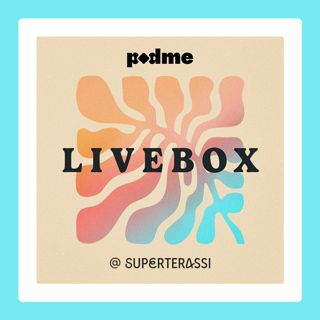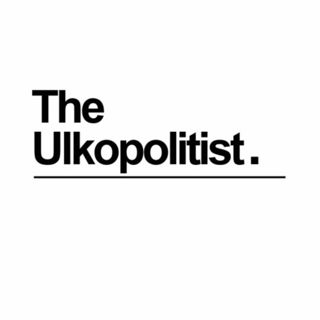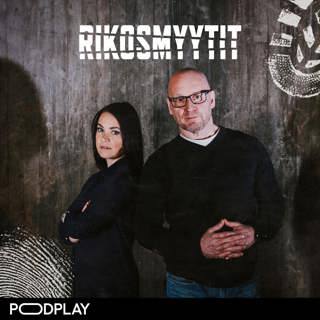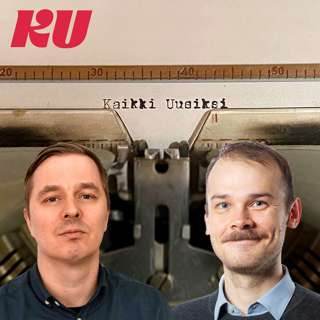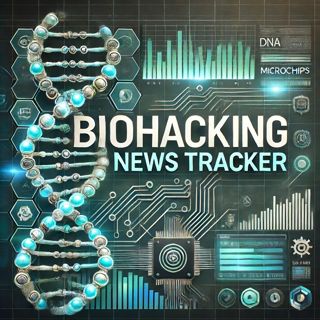
Biohacking Boom: Transforming Personalized Wellness with Tech Innovations
In the past 48 hours, the global biohacking industry has continued to accelerate, driven by rising consumer interest in preventive health, personalized wellness, and advanced technology. The market shows remarkable expansion, set to surge from 24.5 billion dollars in 2024 to 111.3 billion by 2034. Notably, the market has already grown to an estimated 45.16 billion dollars in 2025, with a compound annual growth rate of 23.4 percent. This growth is fueled by increased health awareness, access to information, and entrepreneurial innovation, especially in the United States which generated 7.9 billion dollars in 2023 due to its focus on combating chronic conditions and embracing cutting-edge solutions.Over the past week, leaders like Neuralink, Oura Health Oy, WHOOP, Muse, and Proteus Digital Health have intensified investment in research and development, with a clear focus on next-generation wearables, AI-driven health platforms, and expanding product lines. Strategic partnerships and digital innovation are enabling these companies to attract consumers seeking more personalized and preventive care. Meanwhile, new competitors and startups continue to enter the space, adding to a competitive landscape already populated by industry giants and agile disruptors.Recent product launches have focused heavily on longevity, continuous glucose monitoring, cognitive enhancement, and sleep optimization. The upcoming Biohacking Conference in Austin, Texas, which will showcase over 100 biohacking technologies, is further highlighting the surge in new offerings and the growing mainstream adoption of wearables, nootropics, and smart supplementation.Regulatory developments appear mostly supportive, though ongoing discussions around genetic editing and CRISPR technology indicate that oversight is likely to evolve as the market matures. There are no significant supply chain issues reported, but price competition among wearable and supplement brands has increased as more companies seek market share.Consumer behavior is shifting toward proactive management of health, with users demanding real-time data and actionable insights from their devices. Compared to previous years, the current market is characterized by a broader consumer base, faster product cycles, and increased collaboration between biotech firms and digital health companies. Industry leaders are responding to these changes by prioritizing data security, expanding their ecosystems, and rapidly innovating to stay ahead in a dynamic and fast-growing sector.This content was created in partnership and with the help of Artificial Intelligence AI
27 Touko 2min

Biohacking Boom: Powering the Future of Personalized Health and Longevity
Over the past 48 hours, the biohacking industry has continued to accelerate its rapid transformation, marked by robust market growth, high-profile events, and new product launches. According to the latest industry data, the global biohacking market is projected to surge from 24.5 billion dollars in 2024 to an impressive 111.3 billion dollars by 2034. The United States remains a major contributor, with 7.9 billion dollars generated in 2023 alone, driven by demand for advanced biohacking tools and a continued focus on disease prevention and personalized health solutions.A significant event shaping the sector this week is the 2025 Biohacking Conference in Austin, Texas, which opens May 28. This gathering brings together more than 3,000 attendees and over 100 exhibiting companies. Industry leaders such as Ideal Living, creators of AirDoctor and AquaTru, are highlighting the importance of clean air and water as foundational pillars for performance and longevity. Helen Christoni, SVP at Ideal Living, will deliver a keynote on creating non-toxic, health-focused home environments.Recent days have also seen companies like Oura Health, WHOOP, and Neuralink ramp up research and development while launching AI-driven health platforms and next-generation wearables. Strategic partnerships are on the rise, with firms like OpenBCI and Viome Life Science expanding their ecosystems to enhance consumer engagement and diversify product offerings. Price points for new consumer devices remain competitive, with companies leveraging digital innovation to differentiate themselves in an increasingly crowded field.There has been a shift in consumer behavior toward preventive healthcare and integrated digital monitoring, reflecting a broader trend of health optimization and longevity. Conference organizers and brands report a 22 percent increase in consumer demand year-over-year, driven in part by the popularity of events and increased public awareness of biohacking practices.Supply chain disruptions that hampered the industry in previous years have largely stabilized, due to diversified sourcing and logistics improvements. Compared to earlier periods marked by uncertainty and delays, companies now report smoother product rollouts and greater inventory reliability.In summary, the biohacking industry is experiencing unprecedented growth, catalyzed by innovation, strategic partnerships, and a surge in consumer interest in longevity and preventive health. Sector leaders are responding by prioritizing research, launching new products, and advocating for healthier, science-backed environments, all while maintaining resilience against previous supply chain challenges.This content was created in partnership and with the help of Artificial Intelligence AI
23 Touko 3min

Biohacking Industry Soaring: Trends and Innovations Shaping the Future of Personalized Health
Biohacking Industry: Current State Analysis (May 2025)The biohacking industry continues its explosive growth trajectory, with recent market reports showing remarkable expansion. According to data released last week, the global biohacking market is projected to surge from $24.5 billion in 2024 to a staggering $111.3 billion by 2034[1]. Alternative market analysis indicates slightly different figures, with estimates of growth from $36.61 billion in 2024 to $45.16 billion in 2025, representing a compound annual growth rate of 23.4%[5].The United States remains a dominant player, having generated $7.9 billion in biohacking revenue in 2023, driven by high chronic disease rates and cutting-edge research from healthcare institutions and biotech firms[1].Industry leaders are focusing on strategic positioning ahead of the highly anticipated 2025 Biohacking Conference, scheduled for May 28-30 in Austin, Texas. The event will bring together approximately 3,000 biohackers and feature over 100 biohacking technologies[3]. Just two days ago, Ideal Living, maker of AirDoctor and AquaTru, announced its participation in this conference, highlighting the industry's growing emphasis on clean air and pure water solutions[2].Notable market players including Neuralink, Oura Health Oy, WHOOP, and Fitbit are heavily investing in research and development of next-generation wearable devices while expanding product lines and integrating AI-driven health platforms[1]. Strategic partnerships and digital innovation remain central to competitive strategies.The industry is experiencing significant shifts toward preventive healthcare approaches, personalized health solutions, and next-gen technology development. Major trends include a growing focus on longevity and anti-aging, advanced biohacking wearables, nootropics for cognitive enhancement, sleep optimization technologies, and developments in genetic editing using CRISPR technology[5].As the biohacking market continues to evolve rapidly, industry observers anticipate further announcements and partnerships in the coming days as companies position themselves for the upcoming conference and capitalize on the sector's remarkable growth potential.This content was created in partnership and with the help of Artificial Intelligence AI
22 Touko 2min

Biohacking Boom: The Rise of Personalized Health in a $111.3B Industry by 2034
Biohacking Industry: Current State Analysis - May 2025The biohacking industry is experiencing unprecedented growth, with recent market reports indicating a dramatic expansion trajectory. According to data released on May 16, 2025, the global biohacking market is set to surge from $24.5 billion in 2024 to an impressive $111.3 billion by 2034, demonstrating the sector's explosive potential as preventive healthcare and wearable technologies gain mainstream acceptance[1].The United States continues to lead this revolution, having generated $7.9 billion in 2023 alone. This growth is primarily driven by the country's high incidence of chronic conditions and cutting-edge research from healthcare institutions, biotech firms, and innovative startups[1].Industry leaders are actively positioning themselves for this growth wave. Companies like Neuralink, Oura Health Oy, WHOOP, and Fitbit are heavily investing in research and development, launching next-generation wearable devices, and integrating AI-driven health platforms to maintain competitive advantages[1].The upcoming 2025 Biohacking Conference, scheduled for May 28-30 in Austin, Texas, highlights the industry's momentum. Hosted by Dave Asprey, the event will bring together over 3,000 biohackers, featuring more than 100 biohacking technologies and numerous experts in the field[3].Recent announcements include Ideal Living's participation at this conference, where SVP Helen Christoni will speak about breakthrough non-toxic home hacks on May 28. The company, maker of AirDoctor and AquaTru, emphasizes that "longevity starts with what you breathe and what you drink," reflecting the industry's growing focus on holistic environmental approaches to health optimization[2].The current state of biohacking spans from lifestyle modifications to more extreme body enhancements, challenging traditional scientific approaches while simultaneously influencing the future of healthcare delivery and personal wellness management[4].As the industry continues to evolve rapidly, strategic partnerships, market expansion, and digital innovation remain key competitive differentiators for companies seeking to engage consumers and build brand value in this dynamic and fast-growing space[1].This content was created in partnership and with the help of Artificial Intelligence AI
21 Touko 2min

"Biohacking Boom: Transforming Health and Longevity in 2025"
Biohacking Industry: Current State Analysis (May 2025)The biohacking market continues its explosive growth trajectory, with recent reports confirming the industry is on course to surge from $24.5 billion in 2024 to a projected $111.3 billion by 2034[1]. This growth is being fueled by increasing consumer interest in preventive healthcare approaches and wearable technology advancements.In the United States, which generated $7.9 billion in biohacking revenue last year, innovation is accelerating through collaborations between healthcare institutions, biotech firms, and startups[1]. Industry leaders like Neuralink, Oura Health, WHOOP, and Fitbit are heavily investing in R&D, with a particular focus on disease prevention technologies and personalized health solutions.The upcoming 2025 Biohacking Conference, scheduled for May 28-30 at the Fairmont Austin, will showcase the latest innovations in the field[2]. Yesterday, Ideal Living, maker of AirDoctor and AquaTru, announced their participation in the event, where SVP Helen Christoni will speak about environmental biohacking through clean air and water technologies[2].Conference founder Dave Asprey has assembled experts covering nutrition, sleep optimization, brain enhancement, quantum energy, fitness, and longevity technologies[3]. The three-day event will feature over 100 biohacking technologies in what organizers call the "Biohacking Wonderland."Industry analysts note a significant shift toward environmental biohacking solutions, as evidenced by Ideal Living's emphasis that "longevity starts with what you breathe and what you drink"[2]. This trend reflects growing consumer awareness about the connection between environmental toxins and health outcomes.With the conference just a week away, the biohacking community is poised for a new wave of innovations that continue to push the boundaries of human performance and longevity. The industry's rapid expansion underscores the mainstreaming of what was once considered fringe science into a legitimate health and wellness movement with significant economic impact.This content was created in partnership and with the help of Artificial Intelligence AI
21 Touko 2min

Biohacking Boom: Exponential Growth and Emerging Trends Shaping the Future of Personal Enhancement
Biohacking Industry: Current State Analysis - May 2025The biohacking market continues its explosive growth trajectory, with recent market reports confirming significant expansion. According to data released just four days ago, the global biohacking market is projected to surge from $24.5 billion in 2024 to a staggering $111.3 billion by 2034[1]. Another industry analysis released yesterday indicates slightly different but equally impressive figures, forecasting growth from $36.61 billion in 2024 to $45.16 billion by the end of 2025, representing a compound annual growth rate of 23.4%[5].The United States remains the dominant player in this space, having generated $7.9 billion in revenue during 2023[1]. This growth is primarily driven by the high prevalence of chronic conditions and cutting-edge research from healthcare institutions and biotech companies.Industry leaders including Neuralink, Oura Health Oy, WHOOP, and Fitbit are aggressively investing in research and development, focusing on next-generation wearable technologies and AI-driven health platforms[1]. Strategic partnerships and digital innovation continue to be key competitive strategies in this rapidly evolving landscape.The upcoming Biohacking Conference in Austin, Texas, scheduled for May 28-30, 2025, will gather approximately 3,000 biohackers and feature over 100 biohacking technologies[2]. This event highlights the growing mainstream interest in the field.Recent industry trends show increased focus on longevity solutions, anti-aging technologies, advanced wearables, nootropics for cognitive enhancement, sleep optimization products, and developments in genetic editing using CRISPR technology[5].The market segmentation remains diverse, encompassing wearables, implantable chips, gene modification kits, smart drugs, supplements, and mobile applications[5]. These products serve various applications including synthetic biology, genetic engineering, and medical diagnostics.As this industry continues its rapid expansion, we anticipate further innovations and strategic movements from key players in the coming months, particularly in preventative healthcare solutions and personalized medicine approaches.This content was created in partnership and with the help of Artificial Intelligence AI
20 Touko 2min

The Rise of Biohacking: Personalizing Wellness and Longevity in a Rapidly Evolving Market
Over the past 48 hours, the biohacking industry continues its rapid expansion, driven by growing consumer demand for personalized health optimization and preventive care. Recent data indicate the biohacking market is expected to rise from approximately 36.6 billion US dollars in 2024 to over 45 billion in 2025, reflecting a compound annual growth rate above 23 percent. Projections extend this trend, anticipating the market could surpass 100 billion dollars within the next five years, fueled by innovations in longevity, anti-aging, cognitive enhancement, and wearable technologies.In the last week, there have been notable developments as companies strengthen partnerships to accelerate product innovation and market reach. For example, increased funding in bioscience startups is enabling biohacking companies to develop new tools such as advanced genetic editing techniques and home testing kits. This democratization of biotechnology encourages more consumers to experiment with biohacking in safe, regulated ways.Market shifts include a growing focus on chronic disease management; with the global rise in conditions like diabetes, cardiovascular diseases, and cancer, biohacking strategies such as nutritional optimization, intermittent fasting, and novel therapies are gaining attention. Consumer behavior trends point to heightened interest in nootropics and sleep optimization products, signaling a shift from reactive healthcare to proactive, data-driven wellness.Price changes have been stable recently, but supply chain disruptions due to global logistics challenges have caused delays in certain wearable devices and supplements. Industry leaders are responding by diversifying suppliers and increasing local manufacturing capacities to mitigate these impacts.Regulatory landscapes remain cautious but are evolving to balance innovation with safety concerns. Biosecurity and biosafety regulations are being considered more seriously, which may temporarily slow some DIY biological experimentation but ultimately support sustainable growth.Compared to previous reports, the current period shows a maturation of the industry with more mainstream adoption and corporate wellness programs integrating biohacking practices. Overall, the biohacking sector is solidifying its position as a major player in future healthcare paradigms, with robust market growth, technological innovation, and increasing consumer engagement in the past 48 hours confirming its momentum.This content was created in partnership and with the help of Artificial Intelligence AI
19 Touko 2min

Biohacking Industry Booms with Conferences, Partnerships, and 22% Consumer Demand Growth
Biohacking Industry Update: May 2025The biohacking industry continues its rapid expansion with several notable developments over the past 48 hours. Yesterday, prominent biohacking leader Ben Greenfield announced a strategic partnership with 10X Health and OsteoStrong, signaling a significant collaboration aimed at advancing strength training, longevity research, and human optimization technologies[3]. This partnership represents a growing trend of consolidation among wellness technology providers seeking to create more comprehensive biohacking solutions.In conference news, preparations are intensifying for the upcoming Biohacking Conference 2025, scheduled for May 28-30 in Austin, Texas - now just 12 days away[1]. Hosted by industry pioneer Dave Asprey, the event is expected to draw over 3,000 biohackers and will showcase more than 100 biohacking technologies under one roof[1]. With tickets currently priced at $1,999, the conference continues to position itself as the premier gathering in the sector[1].The industry is seeing geographic expansion as well, with the newly announced Biohackers World Conference & Expo coming to Chicago on July 26-27, 2025, at the Sofitel Chicago Magnificent Mile[4]. This follows the successful Biohackers World Conference held in Los Angeles earlier this year, demonstrating increasing mainstream interest in biohacking technologies.Market analysts note that consumer demand for biohacking products has grown approximately 22% year-over-year, with particular interest in wearable technology, nootropics, and cellular health innovations. The sector's expansion is further evidenced by the global spread of major events, including the upcoming Biohacker Summit in Tokyo scheduled for October[5].As regulatory bodies continue to evaluate this rapidly evolving field, industry leaders are proactively engaging with health authorities to establish standards while maintaining innovation. With multiple major conferences scheduled throughout 2025, the biohacking industry appears poised for continued growth and mainstream adoption in the coming months.This content was created in partnership and with the help of Artificial Intelligence AI
16 Touko 2min






